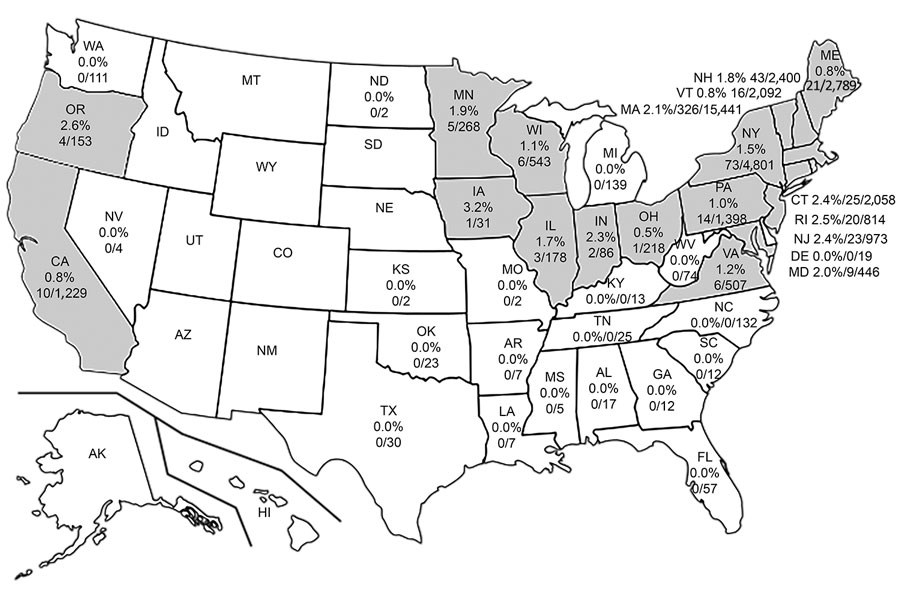Volume 27, Number 12—December 2021
Research Letter
Borrelia miyamotoi in Human-Biting Ticks, United States, 2013–2019
Figure

Figure. Borrelia miyamotoi positivity rates in human-biting Ixodes scapularis and I. pacificus ticks, United States, 2013–2019. Gray shading indicates states in which B.miyamotoi was detected in human-biting ticks.
Page created: October 22, 2021
Page updated: November 21, 2021
Page reviewed: November 21, 2021
The conclusions, findings, and opinions expressed by authors contributing to this journal do not necessarily reflect the official position of the U.S. Department of Health and Human Services, the Public Health Service, the Centers for Disease Control and Prevention, or the authors' affiliated institutions. Use of trade names is for identification only and does not imply endorsement by any of the groups named above.